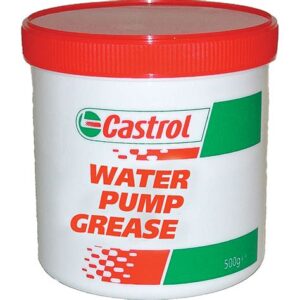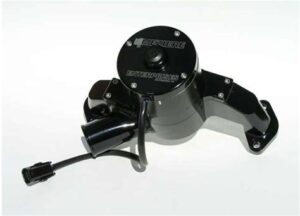external water pump, Explore the essentials of external water pumps, their benefits, selection tips, installation advice, and maintenance strategies for optimal performance and longevity.When it comes to efficiently managing water systems, an external water pump stands out as an invaluable asset for both residential and commercial applications. This powerful tool enhances water flow, ensuring smooth operation for irrigation, drainage, or other needs. In this article, we will delve into the essentials of external water pumps—covering their fundamental concepts, the many benefits they offer, and key considerations for choosing the right model for your specific requirements. Additionally, you’ll find expert installation tips and essential maintenance advice to keep your pump running optimally for years to come. Whether you’re looking to upgrade your current system or start a new project, understanding how external water pumps work will equip you with the knowledge to make informed decisions. Let’s dive into the world of external water pumps and discover how they can transform your water management approach.
Understanding The Basics Of External Water Pumps
An external water pump is a vital piece of equipment used to move water from one place to another, and it operates outside of the water source itself. Commonly utilized in various applications, these pumps play a critical role in residential, agricultural, and industrial setups.
The operation of an external water pump is based on two primary principles: suction and pressure. These pumps create a vacuum that draws in water and then pressurize it to transport the water to a desired location. This mechanism is essential for efficient water distribution in systems such as irrigation, pool maintenance, and even in household water supply systems.
External water pumps come in a variety of types, including centrifugal pumps, submersible pumps, and diaphragm pumps, each suited for different applications. Understanding the differences between these can help you select the most appropriate pump for your specific needs.
When considering the basics of external water pumps, it’s crucial to take into account their specifications, including flow rate, head height, and energy efficiency. These factors directly affect the pump’s performance and suitability for your project.
Overall, knowing how external water pumps work and their essential features can significantly impact your choice of pump and its effectiveness in fulfilling your water transport needs.
Top Benefits Of Using External Water Pumps
External water pumps offer a range of advantages that can greatly enhance the efficiency and effectiveness of water movement in various applications. Here are some of the top benefits:
- Increased Efficiency: External water pumps are designed to handle larger volumes of water compared to submersible pumps. This means they can quickly transfer water, improving operational efficiency in both residential and commercial settings.
- Versatility: These pumps can be used for a variety of purposes, including irrigation, draining pools, and supplying water for other uses. Their adaptability makes them suitable for almost any situation.
- Easy Maintenance: Since external water pumps are above ground, they are easier to access for routine maintenance and repairs. This accessibility can save time and reduce downtime.
- Improved Lifespan: With proper maintenance, external water pumps tend to have a longer lifespan than those submerged in water, as they are less susceptible to corrosion and wear from constant moisture exposure.
- Water Pressure Control: These pumps often provide better control over water pressure, enabling users to adjust settings according to specific needs, such as in irrigation setups.
- Energy Efficiency: Many modern external water pumps are designed with energy-saving technology, helping to reduce electricity costs while still delivering powerful performance.
Choosing an external water pump can offer significant benefits across various applications, making it a wise investment for anyone looking to enhance their water management systems.
How To Choose The Right External Water Pump
Choosing the right external water pump is critical to ensure optimal performance and efficiency for your specific needs. Here are some essential factors to consider:
1. Flow Rate: The flow rate, measured in gallons per minute (GPM), indicates how much water the pump can move within a specific time frame. Assess your water supply needs to determine the necessary flow rate for your application.
2. Head Height: Head height refers to the maximum vertical distance the pump can lift water. Consider the height of your water source and the distance to the discharge point, as this will influence the pump’s efficiency.
3. Power Source: External water pumps can be powered by electricity, gasoline, or diesel. Evaluate which power source is most convenient and economical for your situation. Electric pumps are generally more efficient, while gas or diesel pumps offer mobility.
4. Pump Type: There are various types of external water pumps, including centrifugal, submersible, and positive displacement pumps. Each type has distinct advantages based on the intended use, so understand the specific requirements before making a choice.
5. Durability and Material: Look for pumps made from high-quality materials that can withstand environmental factors. Rust-resistant materials are ideal for outdoor use, especially if the pump will be exposed to moisture or harsh weather.
6. Noise Level: Depending on where the pump will be operated, noise can be a significant concern. Review the noise levels produced by different pump models and select one that meets your preference without causing disturbance.
By thoroughly evaluating these factors, you can ensure that the external water pump you choose will meet your needs effectively and efficiently, leading to successful operation for years to come.
Installation Tips For Your External Water Pump
Installing an external water pump can significantly enhance the efficiency of your water management system. Here are some essential tips to ensure a successful installation:
- Choose the Right Location: Position your external water pump close to the water source but ensure it is on a stable, level surface. Avoid areas prone to flooding or extreme weather conditions.
- Check the Power Supply: Ensure that your installation site has access to an appropriate power source. Most external pumps require a dedicated circuit for safety and efficiency.
- Use Quality Hoses and Connections: Invest in high-quality hoses and fittings that are compatible with your pump. This prevents leaks and ensures maximum water flow.
- Install a Filter: Place a filter at the intake to prevent debris from entering the pump, which can damage it and reduce efficiency.
- Follow the Manufacturer’s Instructions: Always refer to the installation manual that comes with your external water pump. Each model has specific requirements that must be followed to ensure proper installation.
- Connect to the Discharge System: Ensure that the discharge pipe is adequately connected and directed to the desired location. Verify that there are no kinks or bends that may hinder water flow.
- Test the Pump: Once installed, test the pump to ensure it operates correctly. Check for leaks and make adjustments as needed.
By taking these installation tips into account, you can maximize the performance and longevity of your external water pump while ensuring a reliable water supply for your needs.
Maintaining Your External Water Pump For Longevity
Proper maintenance of your external water pump is crucial for ensuring that it operates efficiently and lasts for many years. Regular upkeep can help prevent costly repairs and extend its lifespan. Here are some key maintenance tips to keep your external water pump in top condition:
- Regular Inspections: Check your pump regularly for any signs of wear, leaks, or damage. Look for any unusual noises during operation, which may indicate a problem.
- Clean Intake Screens: Make sure the intake screens are free of debris and sediment. Clogged screens can reduce performance and put extra strain on the motor.
- Change the Oil: If your pump uses oil, inspect and change it as recommended by the manufacturer. Fresh oil helps lubricate the pump and can prevent overheating.
- Monitor Connections: Ensure that all hoses, fittings, and connections are secure. Loose connections can lead to leaks and reduced efficiency.
- Check Electrical Components: Inspect the electrical wiring and connections for any signs of wear or damage. This is especially important for electric pumps.
- Store Properly: If you live in an area with harsh winters, properly store your pump during the off-season. Drain any remaining water and keep it in a dry place to prevent freeze damage.
- Seasonal Maintenance: Dedicate time each season to service your pump. This could include checking for leaks, cleaning out the sump, and testing its overall functionality.
By following these maintenance practices, you can ensure that your external water pump operates reliably and efficiently for many years.
Frequently Asked Questions
What is an external water pump?
An external water pump is a mechanical device designed to move water from one location to another, often used for irrigation, swimming pools, or to supply water to various systems.
external water pump,
What are the main types of external water pumps?
external water pump, The main types include centrifugal pumps, submersible pumps, and positive displacement pumps, each serving different purposes and applications.
What are the benefits of using an external water pump?
Benefits include improved water flow efficiency, increased pressure for irrigation systems, and the ability to transfer water over long distances.
How do I choose the right external water pump for my needs?
Consider factors such as flow rate, head height, power source, and specific applications to ensure you select the optimal pump for your requirements.
How do I install an external water pump?
Installation usually involves selecting a suitable location, connecting the pump to a power source, and ensuring proper plumbing for intake and discharge lines.
What maintenance do external water pumps require?
Regular maintenance includes checking seals, cleaning filters, monitoring performance, and ensuring that the pump is free of debris and obstructions.
Can external water pumps be used for potable water?
Yes, but it’s crucial to select a pump that is specifically designed for potable water to ensure safety and compliance with health regulations.




